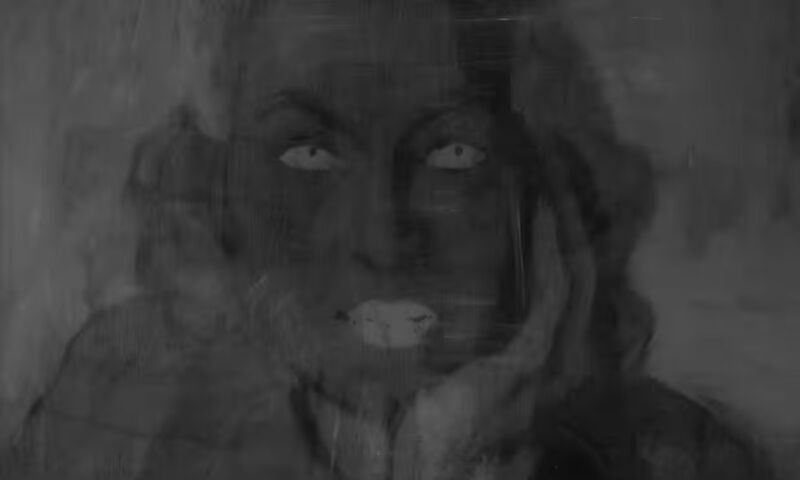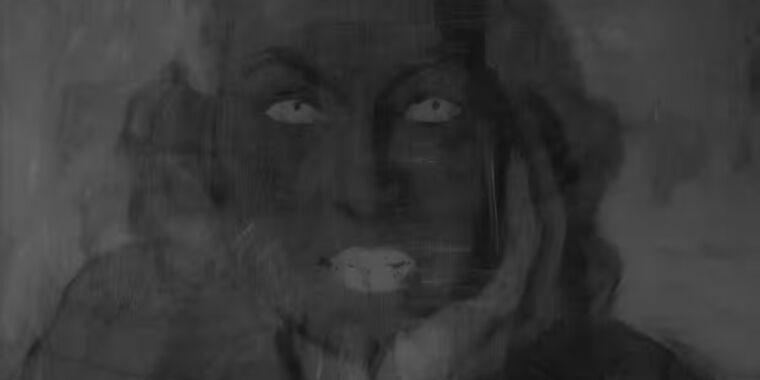
Royal Museums of Fine Arts of Belgium, Brussels
Researchers at the Royal Museums of Fine Arts of Belgium, using infrared reflectography, have discovered an earlier painted portrait of a woman underneath René Magritte’s 1943 painting, La Cinquième Saison, from 1943—possibly a portrait of his wife, Georgette. The work is part of an ongoing research project to scientifically explore the artist’s painting materials and techniques. The discovery will be one of many findings included in a new book, René Magritte: The Artist’s Materials, to be published later this month by the Getty Conservation Institute in Los Angeles.
“Although there have been plenty of times when the technical examination of artworks has revealed a second image beneath a painting’s surface, it is always exciting when a new example is discovered,” Thomas Learner, head of science at the Getty Conservation Institute, told The Guardian. “In this case, the IR reflectography image is so clear and striking that it even raises the possibility of identifying the sitter.”
As previously reported, X-rays are now a well-established tool to help analyze and restore valuable paintings because the rays’ higher frequency means they pass right through paintings without harming them. X-ray imaging can reveal anything that has been painted over a canvas or where the artist may have altered his (or her) original vision. For instance, Vermeer’s Girl Reading a Letter at an Open Window was first subjected to X-ray analysis in 1979 and revealed the image of a Cupid lurking under the overpainting. And last year, conservationists who were conducting an X-ray analysis of Vincent van Gogh’s Head of a Peasant Woman discovered a hidden self-portrait on the back of the canvas. In 2008, European scientists used synchrotron radiation to reconstruct the hidden portrait of a peasant woman painted by Van Gogh.
These and other scientific techniques can also reveal vital information about the pigments and other materials used, as well as artistic techniques. For example, in 2020, a team of Dutch and French scientists used high-energy X-rays to unlock Rembrandt’s secret recipe for his famous impasto technique, believed to be lost to history. The following year, scientists used macro-X-ray fluorescence imaging to map out the distribution of elements in the paint pigments of Jacques-Louis David’s famous portrait of 17th-century chemist Antoine Lavoisier and his wife Marie-Anne—including the paint used below the surface—to create detailed elemental maps for further study. And earlier this year, scientists used X-ray powder diffraction mapping and synchrotron micro X-ray analysis to study Rembrandt van Rijn‘s 1642 masterpiece The Night Watch and found rare traces of a compound called lead formate.
According to Catherine Defeyt, a researcher at the University of Liege and the Royal Museums, and her co-authors, Magritte rarely talked about the painting materials and techniques he used to create his art, and much of the abundant literature about the artist ignores that aspect of his work. Yet understanding his materials and techniques is critical to preserving Magritte’s legacy. So in 2016, Defeyt and Francisca Vandepitte, Royal Museums senior curator of modern art, kicked off the “Magritte On Practice” collaborative research project.

